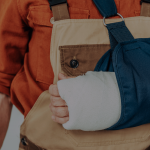The CLC has a longstanding commitment to improving health and safety for all workers. Through our ongoing work on health and safety training, education standards development, legislation, regulations and collaboration; we have and will continue to work tirelessly for a safe and healthy workplace for all.
Table of contents:
About this guide
The Westray mine disaster
Introduction: Investigating Corporate Criminal Negligence
Planning ahead, seriously
What to do in the event of a death or critical injury
Recommended measures for joint health & safety committee and union representative
Document checklist
About this guide
Every year, around 1000 workers are killed in Canadian workplaces. In many cases, the hazards that lead to the workers death were clearly visible or easily identified if the employer had taken the time to look. When a worker is killed because of criminal negligence, proper documentation and investigations are the only way to ensure that the right people are brought to justice.
This guide provides a framework for ensuring effective documentation that will assist with a criminal investigation. It is not a how-to guide for how to conduct an investigation, though some tips are provided for readers to consider while they are conducting their investigation. Those resources are available through your union.
This guide has been written for union health and safety activists and will provide you with the information you need to investigate potential corporate criminal negligence, deal with negligent employers, describe what happened in detail and complete an independent accident report in the aftermath of a death or critical injury.
The Westray mine disaster
Gave Birth to Criminal Negligence Law for Employers
The Westray explosion 20 years ago on May 9, 1992, in Stellarton, Nova Scotia, marked a watershed in corporate criminal negligence. Twenty-six men were killed when uncontrolled methane gas exploded in an underground coal mine. After a public inquiry, a Nova Scotia Supreme Court judge was so outraged by the failure of corporate senior officers to prevent the tragedy that he called upon the federal government to revamp the Criminal Code. In 2004 Canada’s 37th Parliament, through a private NDP members bill, passed amendments to the Criminal Code in Bill C-45 or the “Westray Bill” with unanimous support of all parties. The bill became law after years of hard work by the Westray families and unions who brought the judge’s recommendations to the attention of parliament. United steelworkers were particularly instrumental in having the law passed.
The amendments introduced by the bill revoked the antiquated legal principle of the “directing mind” of the corporation, created a new legal framework that understood the different roles and responsibilities of senior officers and representatives, and imposed a duty on those who direct how people work to protect them from bodily harm. This imposed a positive duty on senior officers to ensure that work is designed, planned, and supervised to be carried out safely.
Since the corporate criminal negligence amendments were passed, almost 1000 Canadians have died at work every year. Very few of these deaths have been investigated by the police, and far fewer have lead to criminal charges. So far there have only been six charges laid. As none of these cases have made it into the court system, there is not yet case law that directly addresses the amendments. However, the language of the amendments is clear on its face and the intention of Parliament was unanimous. If an employer’s negligence kills a worker, they shall be held criminally liable.
Introduction: Investigating Corporate Criminal Negligence
The corporate criminal negligence amendments of the Criminal Code recognize and clearly state that managers, at different levels, must fulfill various responsibilities. Prevention is one of the most important of these responsibilities. It is a management responsibility in two ways:
- First, if a manager has an important role in the development of policies or manages an important aspect of a corporation’s activities, they are considered senior officers. Consequently, they must make sure that policies and practices address health and safety concerns within the area and scope of their responsibility.
- Second, when managers or senior officers direct the work that others do, they have a legal duty to take reasonable steps to prevent bodily harm to that person rising from that work.
If an employer fails to show due diligence in the event of a critical injury or fatality, he or she can be held criminally responsible, meaning they could serve time in jail and/or pay unlimited fines.
Click here for more information on Corporate Criminal Negligence.
Planning ahead, seriously
Prevention, First and Foremost
Health and safety should not be confrontational issue between employees and employers. Yet sometimes, employers are so complacent or incompetent that the situations discussed in this guide occur. First and foremost, as health and safety activists, we want to prevent workers from being hurt, poisoned or killed at work. Where employers have been criminally negligent, we want to see them prosecuted to the full extent of the law.
To help protect our members from hazards in the workplace, it is critical that you know your provincial occupational health and safety legislation and regulations. You are not expected to be an expert in health and safety, but you do need to know what the law says with regards to rights and responsibilities for all workplace parties. Contact your local union for training and assistance.
Prosecutions Need Documentation
It is crucial to plan ahead for the day that you hope never happens — the day someone is seriously injured or killed at work. If you have a difficult employer, the competency and due diligence of the employer, or lack thereof, need to be documented.
Where employers have been negligent, we want to see them prosecuted to the full extent of the law. We can use one strategy to accomplish both. We do this by simply doing what employer has done to workers for years — we document their actions. In fact, by using the existing internal responsibility system, we are able to start our version of progressive discipline against the employer, and may cause them to implement controls before an incident happens.
In the event that a worker is seriously hurt or killed at work and the employer is charged, the employer’s defense lawyers will present evidence to show the company exercised due diligence. The Crown must have documents to rely on and to counter the evidence of the employer. Said another way, if you want to have a chance of convicting a negligent employer, there must be documentation.
To start, it is important to know the workplace structure with regards to “who does what” in management in order to ensure accountability for health and safety at each level of the organization.
Common Problems with Employers and Solutions for Documentation
- Supervisor competency under the Occupational Health and Safety Act?
- Supervisors need to be trained to supervise for the purposes of health and safety in the workplace. They also need support from the employer in order to carry out their duties. The issue of supervisor competency should be raised at a JHSC meeting and ensure it is in the minutes.
- Manager won’t address the issue?
- Progress to the next level of management and ensure you keep a paper trail (emails, letters).
What to do in the event of a death or critical injury
Remember: This is a potential crime scene
In the immediate aftermath of an incident, there will be a lot of people with different ideas about what to do. It is important to have a plan ahead of time, but if the employer does not have a response plan, you should ensure the following steps are taken:
- Ensure 911 has been called, and the injured workers are getting the required medical assistance.
- Strive to maintain the scene and do not allow anything to be disturbed but not at the determinant of rescuing a worker or ensure their life is preserved above all else.
In some cases, after an incident takes place the employer will want to get the space cleaned up as soon as possible, so they can get back to work. But if it is a potential crime scene, a proper investigation must be completed. Remember that a critical injury can turn into a fatality, and the scene should be treated as such. Once the injured workers are taken care of, ensure that the scene is cleared of bystander and preserve evidence.
In the event of a fatality, the police must be called, and they should take over controlling the scene once they arrive. Ensure that you do not interfere with the work of the police.
The Process
The employer must conduct an investigation to determine the circumstances surrounding the accident.
A union or employee representative must be present and involved for the entire process of the employer investigation:
- Contact the local union office to arrange for representation, if there is no union representation on site or for consultation and assistance.
- Do not jointly provide an accident report and do not sign the employer accident report; (this may cause problems later in the event of a prosecution)
Recommended Measures for Joint Health & Safety Committee and Union Representative
- Call 911 and seek medical attention.
- Ensure the scene is protected.
- Participate in the investigation to help in identifying a root cause.
- Identify the “supervisor” in the eyes of the law
- Complete an accident report that is separate from any employer report. *DO NOT sign off on an employer report.
Recommended Measures for Joint Health & Safety Committee and Union Representative
1. Ensure the police and the relevant Ministry of Labour have been called.
Criminal negligence is a crime. Notify the appropriate first responders and the relevant Ministry of Labour. Also make sure the injured worker is receiving medical assistance.
2. Ensure the scene is protected
In the event of a critical injury or fatality, the employer will want to clear the scene as soon as possible to get people back to work. But it is a crime scene, and a proper investigation must be completed. Do not let anyone touch or move anything on the scene of the accident. When the police arrive, they will hold the scene as required by law. In particular, watch for a manager or supervisor taking immediate remedial action to the accident scene or adding files or changing records. It is a criminal offense to tamper with a crime scene.
3. Participate and support parallel investigations
Keep in mind that there will be a number of parallel investigations occurring at the same time: the Ministry of Labour, the police, the JHSC, the employer and the union. You will need to know how and when to participate in each one. Contact your local union for assistance.
When accidents are investigated, the emphasis should be on finding the root cause of the accident rather than the investigation procedure itself, so it can be prevented from happening again. The purpose is to find facts that can lead to actions, not to find fault. In the event of a serious injury or fatality, the investigators will be looking for deeper causes. So be patient, helpful and take the time to answer their questions.
Please Note: Incidents that involve no injury nor property damage should still be investigated to determine the hazards that should be corrected. The same principles apply to an investigation of a minor incident and to the more complex investigation of a serious event.
There is rarely a single cause in any workplace accident. Although it can be difficult to prove that the employer did not practice due diligence, it is important to assist the police in finding a root cause. There is much more to an investigation than looking for a piece of paper that says the employer takes health and safety seriously. The police must ensure there hasn’t been document tampering, backdating, manufacturing of evidence and that employee testimony matches the employer’s reports.
4. Identify the Supervisor
Having the title “supervisor” doesn’t necessarily mean the person is a supervisor. A “supervisor” is a person who is in charge of a workplace or has authority over a worker. Just because a manager is put in charge, doesn’t mean they are the supervisor. Someone else might ultimately be responsible. Consider what it means to be “in charge of a workplace” or “has authority over a worker.” The person who is the supervisor in the eyes of the law likely has the ability to:
- fire workers;
- discipline workers;
- promote or demote;
- hire workers;
- control what equipment is used; and
- meet with workers to review safety issues.
5. Conduct the Investigation
Ensure that there is an appropriate investigation protocol in place at your workplace. Training and documentation are two core elements. Documentation techniques should include note-taking, video and taping equipment use. Always take the time to look for deeper causes. Do not simply record the steps of the incident.
A) Complete an independent accident report
Ensure you have completed your union’s accident investigation report (in addition to any police report, or employer’s report) including:
- Accident information
- Date, time and site of accident
- Suspected cause(s) of accident
- If the hazard was previously reported to the employer;
- If this is a reoccurring hazard;
- What was the union and/or joint health and safety committee’s recommendations regarding the previously reported hazard;
- Name, addresses and telephone numbers of all witnesses;
- Weather conditions, if applicable;
B) Describe what happened in detail and in writing. Make sure to consider the following questions:
- Were written procedures and orientation available?
- Were workers trained to do the work?
- Was there adequate supervision?
- Were regular safety inspections carried out?
- Were safety rules communicated to and understood by all employees?
- Were safety rules being enforced?
- Had hazards been previously identified?
- Had procedures been developed to overcome the hazards?
- Was management on notice of the inherent dangers of a particular location, task or piece of equipment?
- Were unsafe conditions corrected?
- Was regular maintenance of equipment carried out?
C) Identify the root cause:
The JHSC’s inspection, interviews and investigation should be put into a report that assists in identifying the root cause of the critical injury or fatality. Without the identification of the root cause(s), future prevention will be difficult and could lead to further accidents.
DO NOT SIGN the Employer’s Accident Report
The employer is required by law to do an accident report, and the union’s health and safety representatives should participate in that investigation, if for no other reason than to act as witness to how the employer conducts their investigation. If the worker members of the employer’s investigation do not feel that the employer has considered all the facts, or they think they are trying to hide information that would leave them venerable to criminal negligence charges, they should not sign any report and discuss this with their executive as soon as their suspicions start. If the union feels the employer is not doing a proper investigation, or worse, there is suspicion of criminal negligence, the union can also conduct its own separate investigation.
Here is a checklist of documents to collect for building a Corporate Criminal Negligence case when there is a critical injury or fatality
- Complaint Report
- Investigation Report
- Statement of Complaint
- Statement(s) of Witnesses
- Proposed Preventative Action
- Statement of Respondent
- Notice of Injury Report
- Accident Investigation Report
- Workers Compensation Board/Insurance Claim and Documentation
- Medical Report(s)
- Police Report(s)
- Details of the incident
- Previous reports involving the respondent
- Previous reports filed by the complainant
- Notes from the interviews and any video or audio tapes
- Employer’s response or non-response
For copies of this guide or for information, contact the CLC at 613.521.3400 or email hse@clc-ctc.ca.





